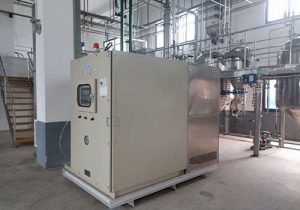How to solve the high pressure of semiconductor chiller compressor?
How to solve the high pressure of semiconductor chiller compressor?
Firstly, the basic approach to solving the high-pressure problem of semiconductor cooler compressors is to identify the cause and then take targeted measures. Common causes of high voltage include the following:
1. Condenser blockage: The condenser is an important part of the semiconductor cooler. If the condenser is blocked due to dust, debris, etc., it can cause the refrigerant to be unable to effectively dissipate heat, leading to high-pressure problems. The solution is to clean the condenser and eliminate blockages.
2. Expansion valve malfunction: The expansion valve is one of the important components that control the refrigerant flow. If the expansion valve malfunctions, causing abnormal refrigerant flow, it can lead to high-pressure problems. The solution is to repair the expansion valve or replace it with a new one.
3. Internal problems of the compressor: If there are problems inside the compressor of the semiconductor cooler, such as gas leakage, piston wear, etc., it can cause high pressure. The solution is to repair or replace the compressor.
4. Excessive or insufficient refrigerant: Excessive or insufficient refrigerant can cause high-pressure problems, and the solution is to add or reduce refrigerant according to equipment requirements.
The specific steps to solve the high-pressure problem of semiconductor cooler compressors are as follows:
Step 1: Confirm the high pressure issue with the semiconductor cooler. By checking the pressure gauge, it can be determined whether the high pressure of the semiconductor cooler exceeds the normal range. If the high pressure is too high, it indicates a problem with the semiconductor cooler.
Step 2: Find the cause of the problem. By investigating the possible causes one by one, the problem that caused the high voltage can be identified.
Step 3: Take measures to solve the problem. Based on the specific cause of the problem, corresponding measures should be taken, including cleaning the condenser, repairing or replacing the expansion valve, repairing or replacing the compressor, and adding or reducing refrigerant.
Step 4: Test the effectiveness. After taking corresponding measures, it is necessary to conduct tests to confirm whether the high pressure problem of the semiconductor cooler has been resolved. The test method is to run the semiconductor cooler and observe whether the pressure gauge data is normal and whether the refrigeration effect of the semiconductor cooler is normal.
Related recommendations
small water chiller price
673When considering the purchase of a small water chiller, it's essential to understand the various factors that influence its price. This article delves into the world of small water chillers, exami...
View detailschilling machine
409Chilling Machines: An In - Depth ExplorationIntroductionChilling machines, commonly referred to as chillers, are indispensable in modern cooling technology. They are engineered to lower and sust...
View detailscoil heaters
395Coil Heaters: A Comprehensive GuideCoil heaters are versatile heating devices widely used in numerous industrial, commercial, and even some residential applications. These heaters are designed to...
View detailsChemical Reactor Refrigeration Heating Temperature Control System
1141Chemical Reactor Refrigeration Heating Temperature Control System Good working conditions can only be achieved when the refrigeration and heating temperature control device is installed and ...
View details
 LNEYA Chiller
LNEYA Chiller






HelloPlease log in